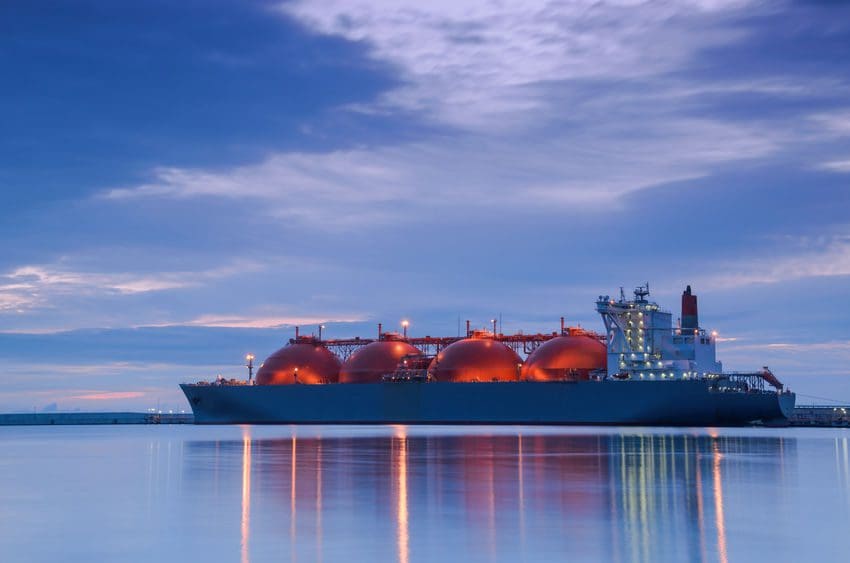In 1848, gold was found at Sutter’s Mill in Coloma, California setting off the Gold Rush, which brought an influx of new participants to seize upon an opportunity. Some were experienced miners. Some were goods traders who knew how to purchase and sell supplies. Many were unprepared. They lacked information and knowledge on where to go and how to mine gold efficiently. Who got wealthy during the Gold Rush in California in the mid-1800s? Was it the miners? Or, was it the traders who sold the miners the equipment, food and other supplies?
New Regulation Spawns New Opportunity
The Gold Rush analogy provides a backdrop to contemplate a new emerging market and opportunity that is going to affect marine shipping and how bunker fuels are purchased. The International Maritime Organization (IMO) ruled in 2016 that starting January 1, 2020, the sulfur content in marine fuels must be slashed to 0.5 percent m/m from the current 3.5 percent m/m with sulfur emissions being reduced by 80 percent through switching to lower sulfur fuels. In many ways, the regulation only provides part of the story. It’s like the first announcement that gold was discovered in 1848. It provides businesses with an impetus to leap into the market and participate.
How to Successfully Participate in IMO 2020
With the regulation set for January 1, 2020, companies are vying for position and competing strategies to take advantage of the market and be a first mover. However, before money can be made, a company needs to think—or rethink—its business model for how to even participate in the marketplace with the newer, cleaner fuels. Remember the Gold Rush analogy? Not everyone was a miner. There were plenty of other people who worked in the general stores, sold provisions and provided food, clothes and other supplies to the miners.
There are three different emerging business strategies for how to seize upon the new IMO 2020 regulation: pure trading without owning assets, trading with some physical assets and building a refinery to control production of the lower-sulfur marine fuels in the region. Each have their own inherent risks and rewards.
Pure Trading with No Assets
Probably one of the easiest to stomach from a capital-intensive standpoint is that of a pure trader or marketer. A company does not need to have a physical presence in the industry where they are producing the fuel or storing it. Instead, a company can rely on a portfolio of long-term and short-term contracts where they connect bunker fuel suppliers and customers. The strategy here is to be nimble and launch into long-term relationships that establish an equity position without any production assets. The danger, however, comes in having to lock in all pieces of the supply chain and maintain vigilance to understand inventory and position for risk management purposes. Without contingency plans in the supply chain network, a trading company may be forced to spend big dollars on prompt purchases in order to satisfy customer commitments.
Trading with Physical Assets in the Region
The IMO 2020 regulation will be focused on maritime transport and shipping. Therefore, companies will benefit from storing assets to purchase cheap low-sulfur bunker fuels and store them close to ports and terminals. Then, the company can have long-term agreements to sell to customers at a price that locks in a guaranteed margin. The risks with this strategy focus on paying additional fees and costs for the storage. Storage is at a premium. Marine terminals are usually constrained, so a company may have to enter into a lease agreement for a longer time period than anticipated or pay additional fees to be guaranteed space. In other words, the company takes a gamble that there will be enough customers at the terminal or port to cover the costs and margin. On the flip side, having storage provides a physical option that can be exercised when the trading company purchases product cheaply.
Build a Refinery to Control Production of Low-Sulfur Marine Fuels
A third strategy is to build a new oil refinery or upgrade an existing one so that it can meet the proper specs for making the lower-sulfur fuel. This strategy is the riskiest of the three. First, the strategy is costly. The refinery construction may not be covered by the ability to produce and sell the low-sulfur fuel and other products. Second, the refinery may not be able to meet the new specs for the finished product. Third, the timeline for construction is long. The refinery must be operational by the time the market opens (or the new regulation goes into effect). The reward is that the refinery is in full control of what it produces. It surveys the marketplace and then determines what product slate to produce based on the availability of cheap crudes. It will focus on the lower-sulfur marine fuel and other products to build out its portfolio of business.
Reality of a Hybrid
The reality is that no one company engages in purely one of these strategies when entering a new market. Companies dabble in a combination of strategies in order to gain an advantage. Their choice is best determined when they honestly examine themselves and determine their core strengths and weaknesses. If a company does not have the competency to build and maintain a refinery (however big or small), then it should engage in a combination of leasing storage and lock in long-term supply and customer contracts. If, however, a company’s core strength is in operating assets, then it should consider the third strategy of building or upgrading an existing asset to participate.
What Do They All Have in Common?
Each of the above strategies share some commonalities. Each strategy requires relationships in the marketplace with suppliers, customers, logistics companies and other brokers. These relationships dictate and drive success based on the flexibility of contracts, the ability to understand the market dynamics and not be locked into an overly rigid structure.
Secondly, underpinning these relationships and portfolios are the need for information on inventory and valuation of the inventory. It’s not just enough to build a spreadsheet on tank inventory. Business intelligence (BI) is needed so a company can always know its position in the market relative to the market factors at work. It is no different than a miner knowing information on the best stream to mine or the best technique on how to pan for gold. Companies must have systems in place to provide the inventory valuation to know its position and track processes against targets and goals that are in line with its strategy. Am I long or short? Do I need to purchase more? Do I need to shorten my position? What are the prices doing today? Tomorrow? Six months from now? Next year? What is happening in the market? Am I protected? What do my customers demand? Can I produce it or supply it to them in a timely manner? Each of these questions relies on knowing and being fed information on position and inventory.
What is the Best Way to Obtain the Knowledge?
Knowledge is power. Having systems in place to provide the inventory position, custody transfers, pricing and valuation begins to build the foundation on how to run a business successfully. Gone are the days of large Enterprise Resource Planning (ERP) implementations to handle the task. Companies cannot afford to wait for the implementation to proceed with a waterfall or pseudo-agile methodology where the finished system is completed after 6-9 months. In cases like this, one where the new market is just months from starting, companies cannot afford a traditional system implementation.
Just like the miners of the Gold Rush that had to pounce on the opportunity and try to seize on a claim before someone else, companies need to move quickly and bootstrap their systems together. In situations with an emerging marketplace, the requirements are not completely known. Companies may not have hired all the necessary personnel. Therefore, old ideologies of documenting all requirements thoroughly must be discarded. Not all use cases or scenarios will ever be known ahead of time. Only when a company enters a new strategy or way of business will the requirements be revealed. Even then, original assumptions will be discarded over and over as the business evolves.
The system must keep up with the changes. The base foundation exists for funneling data into the system to create information and meaningful insight. The system is then built in components. What information is needed to make decisions? What are the sources of that information? What transformation of the inputs are needed? How can a company gain critical insight and not be buried in the weeds? Companies must stay quick and nimble. As companies get a clearer vision on how they are going to participate in the market, these components take shape and flex as well. Bootstrapping systems provides the speed and agility to meet the challenges of the new marketplace.
Opportune specializes in working with downstream refiners around trading, inventory management and overall business intelligence on operations. Our experts routinely work with companies to solve vaguely defined, complex issues to improve the overall management of the company. For some companies, there is a system or collection of systems at the heart of the matter that require anything from tuning to an overhaul to adapting to the business. In other cases, our experts work to create systems where none previously existed, relying on countless years of knowledge and leading practices throughout the industry.
Patrick Long is a Director in Opportune’s Process & Technology practice. Patrick has over 20 years of experience in providing clients with energy trading and risk management, packaged software implementation, trading and risk processes and business process automation. Patrick leads the BI initiative within the firm. He focuses on applying BI tools (e.g., Spotfire and Tableau) to client data in order to allow proper insight for management around both upstream and downstream business issues. Prior to joining Opportune, Patrick worked in the energy consulting trading and risk systems practice at Accenture where he managed multiple project teams through the entire process of software selection to successful implementation of trading and risk management systems for energy trading entities.







